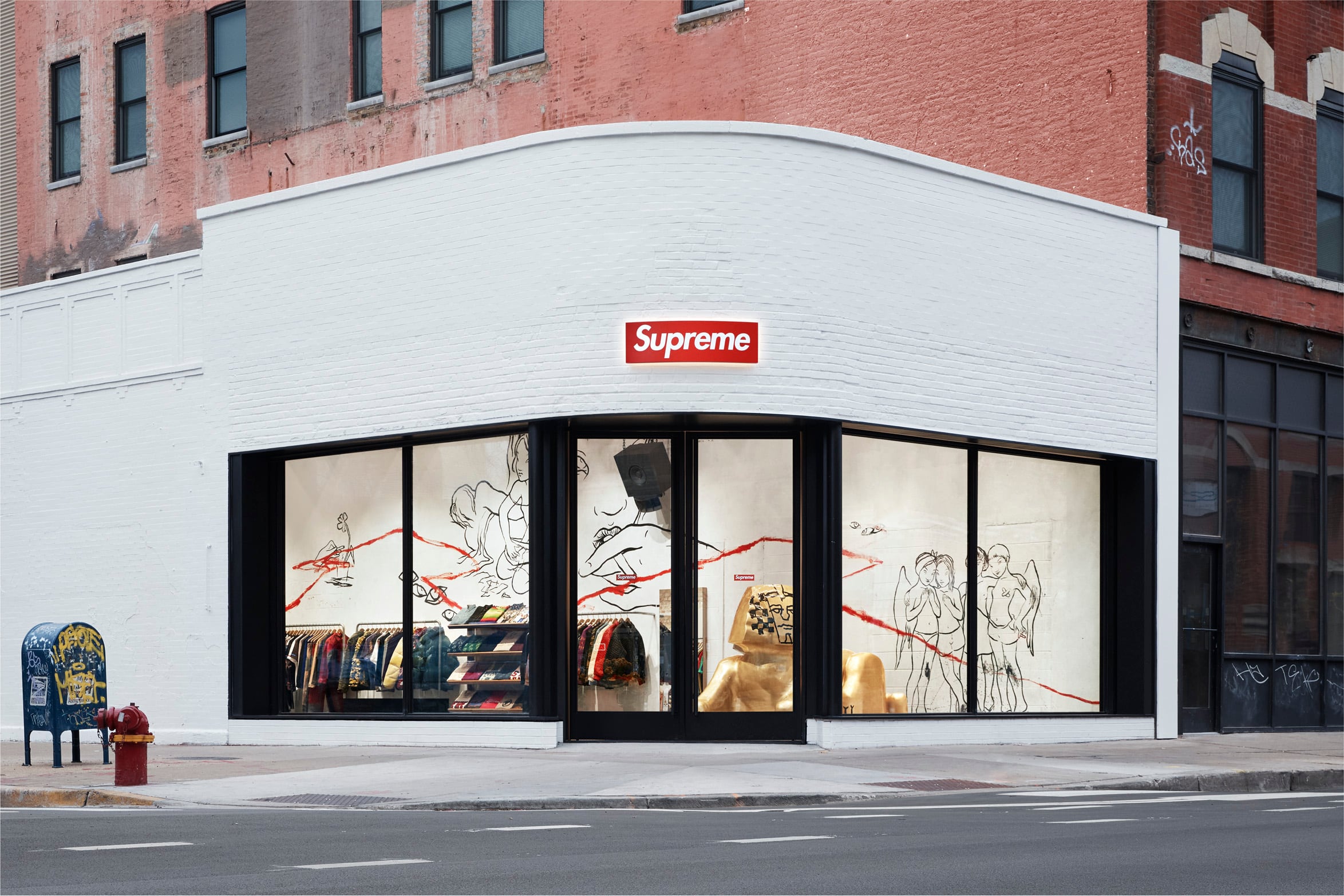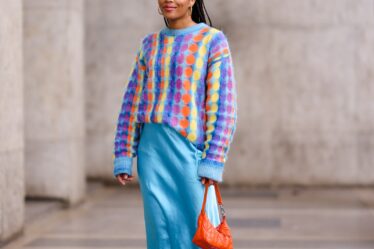
French-Italian eyewear group EssilorLuxottica is buying New York-based streetwear juggernaut Supreme from US apparel group VF Corp. for $1.5 billion in cash, in a surprise deal announced Wednesday morning.
The deal price represented a comedown from the $2.1 billion VF paid for the brand four years ago.
Since VF acquired Supreme in 2020, excitement around streetwear has cooled as some consumers (and luxury brands, which co-opted its aesthetic, marketing tactics and hero products like sneakers and puffer jackets) turned away from the category. Supreme’s sales declined in the aftermath of the acquisition, but the label has staged something of a comeback over the past year, returning to growth in the financial year ending in March, according to regulatory filings.
Analysts mostly saw the deal as a win for VF, as selling Supreme — even at a discount — presented an opportunity to realise cash as the group has battled with a $5 billion pile of debt and a worsening financial situation. It also allows the company to focus on reviving its core brands, including Vans, The North Face and Timberland, all of which saw sales decline in its most recent quarter. The Supreme sale was the first major move of the strategic review of the Denver-based fashion group’s underperforming portfolio that began in February.
There was less of a consensus in the market about why EssilorLuxottica was interested in taking on Supreme. The company owns Oakley and Ray-Ban and also operates eyewear licenses for several luxury labels. Supreme will be the first and only fashion brand in the company’s portfolio, though Oakly has increasingly ventured into sneakers and some apparel in recent years.
For VF’s part, analysts and investors responded positively to the sale. The company’s shares popped as much as 14 percent on Wednesday.
“We believe this a material win for VFC, believing it comes meaningfully above investor expectations and provides a breathe-out relief moment, thereby allowing management to move past liquidity concerns and focus on improving the business,” wrote BMO analyst Simeon Siegel, who described the deal from VF’s perspective as “selling at a loss, for a win.”
Analysts had a different reaction to EssilorLuxottica. There was surprise that it was buying not just a fashion brand but a streetwear outfit. “Streetwear brands seem to be seeing significantly lower engagement from consumers worldwide,” Bernstein analyst Luca Solca commented on the deal.
EssilorLuxottica’s stock was down as much as 5 percent on Wednesday.
How is Supreme’s business doing?
Much better than before.
A regulatory filing on Wednesday revealed the brand generated $538 million in revenue for the year ended March 2024, up from $523.1 million the year prior.
While it’s still below the initial $600 million sales target VF set for Supreme following the acquisition, it shows that the brand was getting back on track after a rocky start to life under VF Corp.
The model that drove Supreme’s initial success and turbocharged its growth throughout the 2010s — accessibly-priced products, tightly controlled weekly drops that created a sense of scarcity, stores that felt like shrines to the brand and countercultural marketing, all packaged for a generation of consumers who grew up on hip-hop and skateboarding — began to lose some shine as scores of other brands began to adopt the same tactics.
To some fans, the brand’s countercultural spirit also felt incongruous as part of a larger corporate entity such as VF. Meanwhile, supply-chain issues resulting from the pandemic also disrupted the brand’s distribution.
The brand’s return to growth was boosted by a raft of store openings in recent years, including locations in Milan, Berlin and Chicago. VF Corp. noted particular growth in South Korea and China after the brand opened long-awaited stores in Seoul and Shanghai.
Chief financial officer Matthew Puckett told analysts that sales were up “low-double-digits” in the fourth quarter ended March 2024, while “strong sell-through across product categories led to improving profitability.”
Why is VF Corp selling Supreme just when things were starting to turn around?
VF initially had lofty ambitions for Supreme.
“We see no upside limitation on the brand. We see a clear line of sight to a billion dollars,” VF’s then chief financial officer Scott Roe told investors when the acquisition was announced in 2020.
It became clear, however, that those ambitions could take years to materialise. At the same time, VF has lately come under pressure amid sliding sales at its biggest brands, such as Vans, and significant debt levels across the group at large. VF generated revenue of $10.5 billion for the year ended March 2024, down 10 percent year-on-year, and also reported net debt of $5.3 billion, while fourth quarter revenue declined 26 percent and 5 percent for Vans and The North Face, respectively. The company announced a strategic review of its assets in February.
VF ultimately acknowledged that Supreme was not the right fit for the group’s wider business. The sale presented the embattled group an opportunity to realise cash, even if at a loss overall.
The positive market reaction likely came in part from the fact that the deal could let it pay down — rather than re-finance — upcoming debt repayments: $1 billion, due December 2024, and $750 million, due April 2025. It was “a path that seemed difficult to chart from the outside,” Siegel said. The $1.5 billion raised through the Supreme sale, although it’s considerably less than the sum VF acquired the brand for, provides ample cash to clear the lion’s share of its immediate debt.
“Our strategic portfolio review concluded there are limited synergies between Supreme and VF, making a sale a natural next step,” Darell said in a joint statement Wednesday. “This transaction gives us increased balance sheet flexibility. It also supports our overall programme to better position the company for long term growth and more normalised debt levels.”
What is EssilorLuxottica’s logic for buying Supreme?
If Supreme was an odd fit among VF Corp’s assortment of outdoor and sneaker brands, it will stand out even more in its new owner’s roster.
EssilorLuxottica is eyewear’s biggest player, born from the fusion of Ray-Ban and Oakley owner Luxottica with the French leader in lens-making, Essilor. The group has been involved in fashion for decades as the longstanding eyewear partner for brands like Armani and Prada, but it has never owned a brand outside of the eyewear category (though Oakley sells some non-eyewear products including sneakers and apparel).
“What will make this a synergistic acquisition for EL does not seem obvious to investors,” investment bank Jeffries wrote in an analysis of the deal on Wednesday.
EssilorLuxottica is a cash-rich company that is running out of mountains to climb in the eyewear space. While the brand continues to sign new licensing deals with the likes of Moncler and Diesel, its own core brands Oakley and Ray-Ban have long outperformed in the company’s portfolio.
Taking control of additional well-known, well-regarded brands like Supreme could prove a savvy move at a time when fashion groups like Kering and LVMH are becoming increasingly reticent to relinquish control of their brands to licensees (both now operate eyewear in-house).
The company could be inspired by a similar shift underway in the beauty space, where former licensing giant Puig has transitioned to running more of its brands outright, shedding licences for Valentino and Prada while taking control of brands like Charlotte Tilbury, Byredo and Dries Van Noten.
Even if interest in streetwear at large has cooled in recent years, EssilorLuxottica is set to acquire the category’s largest and most successful brand by far. The pull of Supreme’s brand and logo could position it for a successful expansion into eyewear under EssilorLuxottica, which also controls distribution of its brands through retail subsidiaries like Sunglass Hut. And there is a pathway for continued growth in Supreme’s fashion business via its careful and considered retail and e-commerce expansion.
What does the deal mean for Supreme’s future?
For the most part, it appears that Supreme’s new owner will take a relatively hands-off approach — something that VF assured investors it would allow Supreme to do back in 2020.
“We presume that EssilorLuxottica’s thinking is very much along the same lines of the historic purchase of Oakley,” said the Jeffries analysis, referring to the possibility that Supreme will be allowed to operate as a semi-autonomous entity within the group.
“I don’t see Supreme being hurt at all,” said Geoff Heath, a former Supreme employee.
It seems that these are the conditions under which Supreme expects it will be able to operate in the next chapter of its turbulent recent history and could allow the company to operate without the demands for rapid growth that a private equity firm might have wanted had it swooped in as the buyer.
“In EssilorLuxottica, we have a unique partner that understands that we are at our best when we stay true to the brand and continue to operate and grow as we have for the past 30 years,” said Supreme founder James Jebbia in the statement announcing the deal Wednesday morning. “This move lets us focus on the brand, our products, and our customers, while setting us up for long-term success.”
Additional reporting by Robert Williams and Lei Takanashi.



